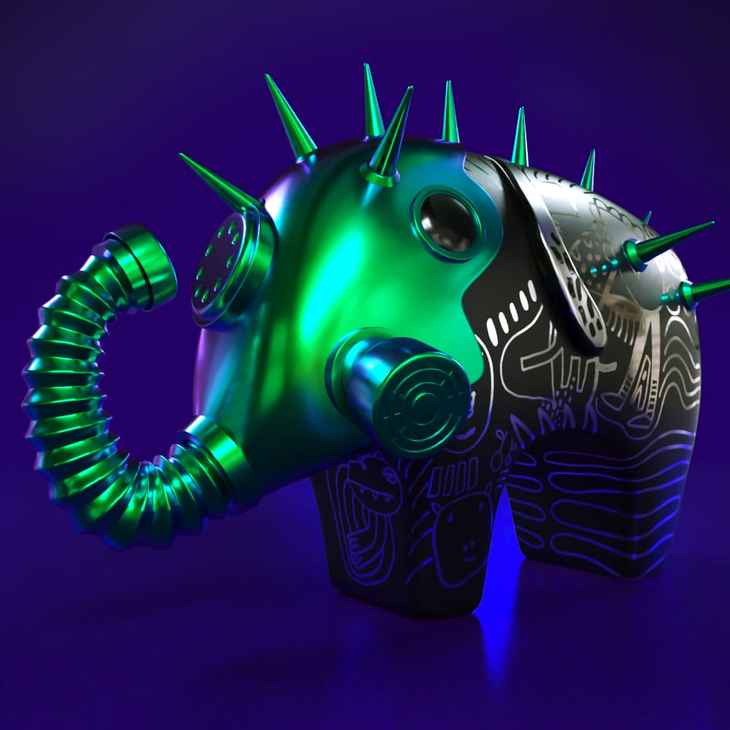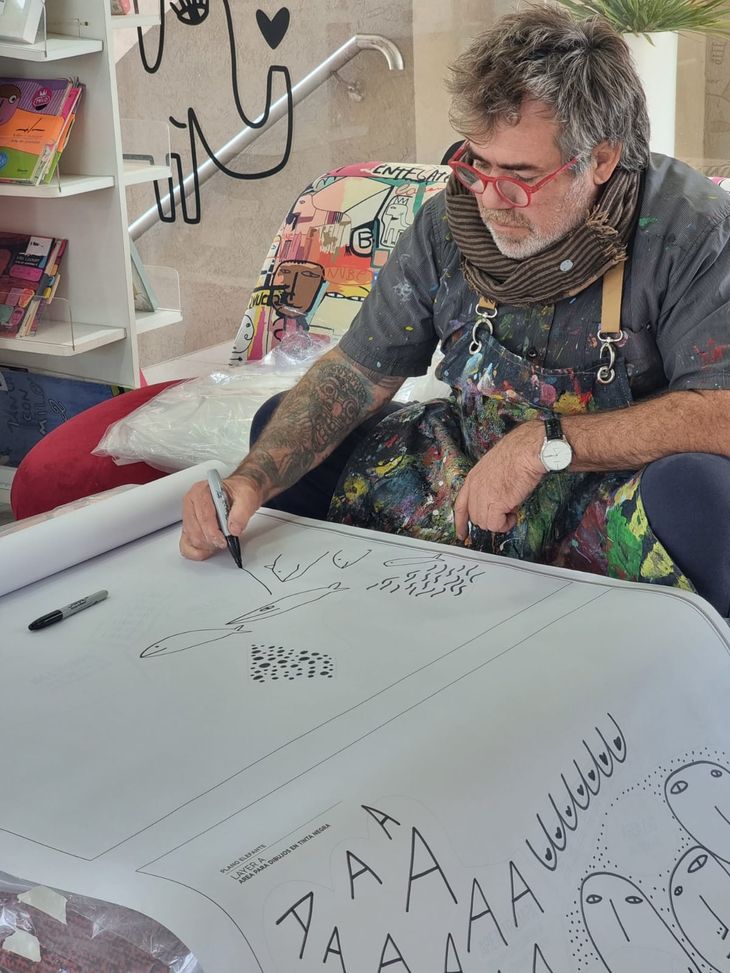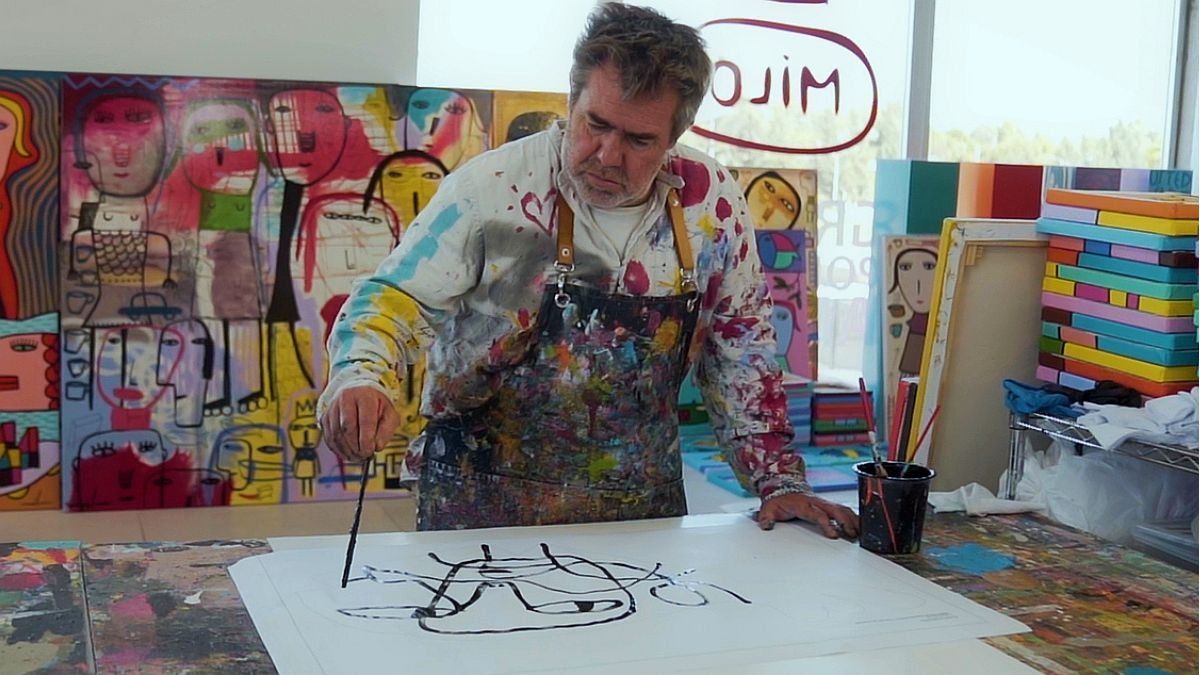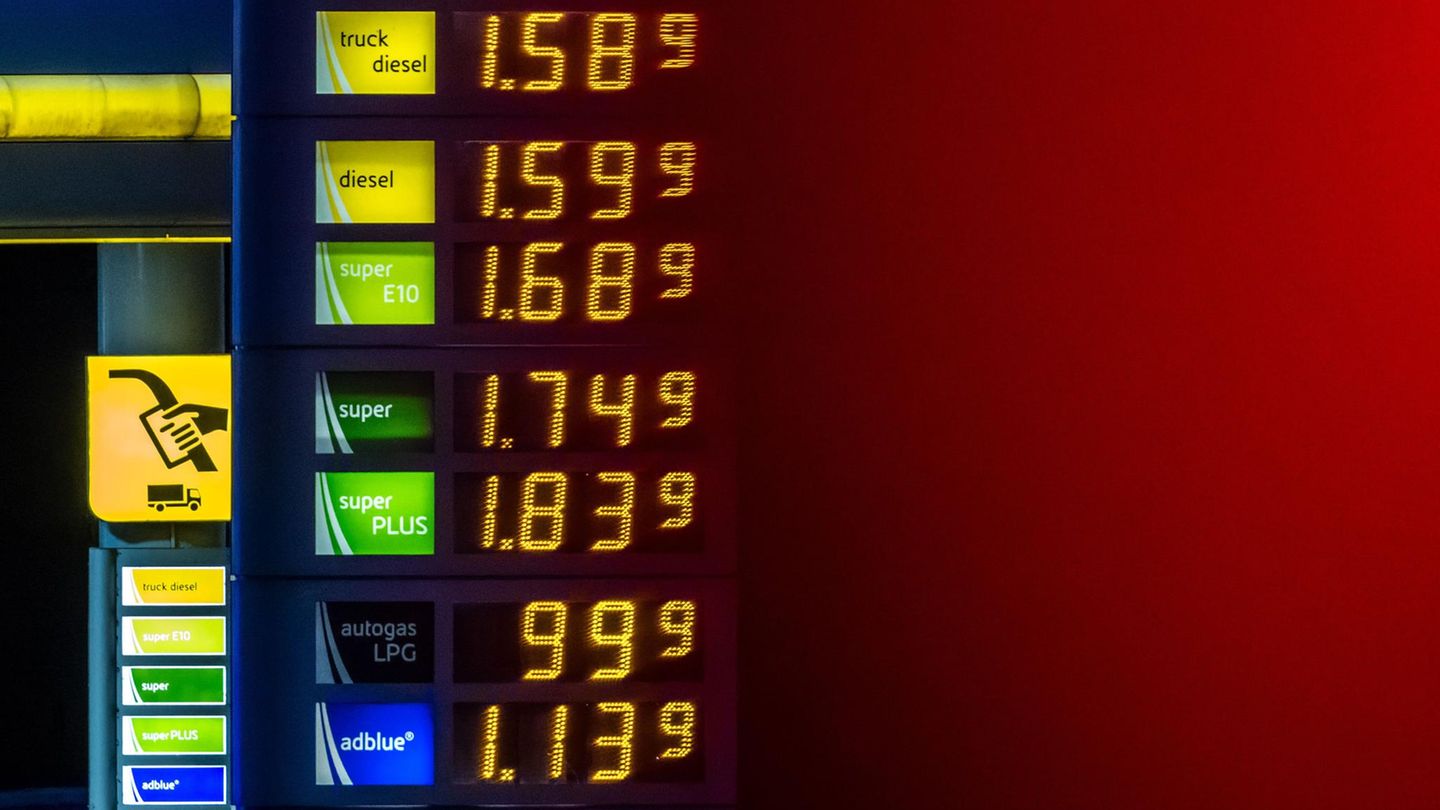Because although Milo Lockett dedicate yourself to pictorial art, to images, as to things in general, you have to touch and smell them to perceive them. So while I accept a coffee, I walk, I get as close as I can to a huge painting in which there are a thousand little gray men, drawn with an almost childlike stroke, surrounding the brown and off-center face that stands out on the canvas.
Why is that figure that predominates in the image not in the center? Because Milo doesn’t like perfection, and that detail gives character to the work. The world and life are not perfect, he explains to me, so there is no reason to attempt representations of a perfection that reality does not offer.
Will it be like this in the Miloverso, its technological project of elephants turned into NFT’s?
fluo green elephant.png
Journalist: What is your relationship with technology, or what was that relationship like, until you plunged into the world of digital art?
Milo Lockett: You know that, in general, they solve everything for me. I have a team of people who take care of answering messages, the networks, the website… because I don’t have the time. Luckily, I have works sold for forty days, so I have to paint and paint.
So, oddly enough, and I guess also because of my age, I don’t write all the time on WhatsApp, or on the computer -he laughs. And many had already offered me to do things in the virtual environment, but I was not convinced of the way. In other words, I don’t pretend that the main thing about the project is to sell the NFTs, and only see the commercial side of it, because I’m doing well with the paintings.
That’s why I liked the proposal william mutis, who approached it differently, thinking of a work in stages, in which we would do something in three dimensions, that is, that would not be a photo pasted, flat, on a screen. There I got hooked, they explained it to me, and now a world opened up to me!
Q.: Has creating these elephants for the virtual world changed the way you approach art?
Milo Lockett: No, I think it enriched me, because that’s how I think about technological tools. One has to understand that each time has its language, and the screens are the language of today. So, I loved working as a team, which I always do anyway.
But in this case we put together a group of eleven people, with digital artists even from other countries, and I’m thinking that this is the beginning of a community. What interests me the most is that now, before the works are for sale, when we present some elephants on platforms, for example, from Mexico or Spain, people get very hooked, and they even ask me how to do it. to buy an elephant. That kills me! -he admits with fascination- because they see them so real that they think they are made physically, and they want to have them in their house.
how the elephants were made
william mutisfrom the digital agency The Collectionswas the one who approached Milo with the idea: to develop a collection of digital pieces that become Non-Fungible Tokens and were under a conceptual umbrella. Thus was born the Miloverse.
“Milo hand-made maps of each piece -explains Mutis- and with that, we worked with Massless -a team of digital artists based in Great Britain- and Facundo Sueiro and Carlos Serrano from Neo DG joined us to give each piece a 3D shape. elephant and the particularities that are seen in the images”.
The first pieces are going to be sold from Milo’s website, but later, uploaded to specific sites like Open Sea, they will go to the ‘minteo’ stage: once the sale of a collection is exhausted, it is called lie to mint, forge a piece (generally, from the Castilian point of view, a coin) so that it can be sold with the authenticity and uniqueness of works of art.
image.png

In the talk with Mutis, something appears with total clarity: “For me, Milo is clearly a Web 3 artist, due to the number of works he produces, due to how massive he is. Although neither he nor we knew it, he was born Web 3. He is not that kind of painter who is far from the world. People love Milo and he lets himself be loved”.
Milo Lockett is defined as “a laborer”. In fact, to start recording the morning I visited him in his workshop, I had to interrupt him. His passion for what he does surrounds him, and in some images captured by the team led by Guillermo, you can see that symbiosis between artist and work in progress.
But at the same time, his intention to get closer to the public permanently has to do with the DAO-type communities – autonomous, decentralized, collaborative – that arise on Blockchain.
“Well, in fact, listening to people, we began to think about how to make physical elephants, printing them in 3D, so that Milo intervenes and those who asked to have them in their hands can do so. That is the fabulous thing about this project” concludes Mutis.
elephant mapping.jpg

Q.: There are often controversies about whether art should become massive, how and why. Didn’t that make any noise to you?
Milo Lockett: Look, I always believed that art should not be elite. It is something that we have been discussing for decades, and it has become obsolete (…) besides, today everything has art and design. It is difficult to see something in this world, which does not have an aesthetic aspect…
Q.: Sure, but it is assumed that if an artist’s creation appears everywhere, that condition of an elevated work is lost…
Milo Lockett: Yes, but although it is good that the work of art is that unique and unrepeatable object that we always talk about, it is also good that this creation appears applied to everyday objects, that it descends into the world of common things, because then it takes on another scope. In the nineties, European museums were almost all empty and what made people fill them were art drugstores – he laughs. It’s incredible, but at one point people went to the drugstore that was at the entrance, as a first intention, and then they saw if they entered the museum!
We have to think about our time. Perhaps, before, art had a certain role in society. Today, art has to be within everyone’s reach. I think it is a universal right.
Another thing, social networks allow us, suddenly, to expand to levels that we had never imagined. And they are the language of our time. You upload a painting and they see it in Europe, the United States and anywhere else in the world at the same time! And they can also tell you ‘I like’ or ‘I don’t like’. That for an artist is also something completely new and democratic.
Milo Lockett with Scope.jpg

The ways in which technology permeates society are often unknown even to technologists. In this sense, although today the value and possible uses of a digital art token are still not entirely clear (its value fluctuates with the ups and downs of cryptocurrencies, for example), the good news is that, paradoxically, there is nothing more essentially human than technological innovation.
Milo understood it even though he felt “a Cro-Magnon man”. Perhaps because his four children, including the youngest, three years old, are beacons that indicate the digital experience of today’s world. Or, perhaps, because his aesthetic approach to the world simplifies for him what we sometimes overcomplicate.
After all, for Milo Lockett (a self-taught artist who never stops creating, after melting more than once in search of his own path) the only thing that matters is doing what he feels and what people like.
“Technologies -reflects the man whose paintings children love- are never going to replace people. They are tools, they simplify our lives, they help us, but nothing more”.
As simple as that. The Miloverso is a new opportunity for a restless spirit to continue having fun. It’s good that we can enjoy it.
Source: Ambito
David William is a talented author who has made a name for himself in the world of writing. He is a professional author who writes on a wide range of topics, from general interest to opinion news. David is currently working as a writer at 24 hours worlds where he brings his unique perspective and in-depth research to his articles, making them both informative and engaging.




